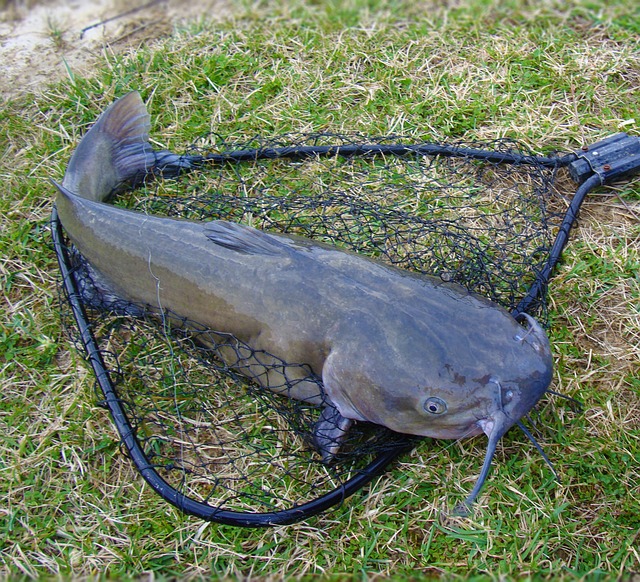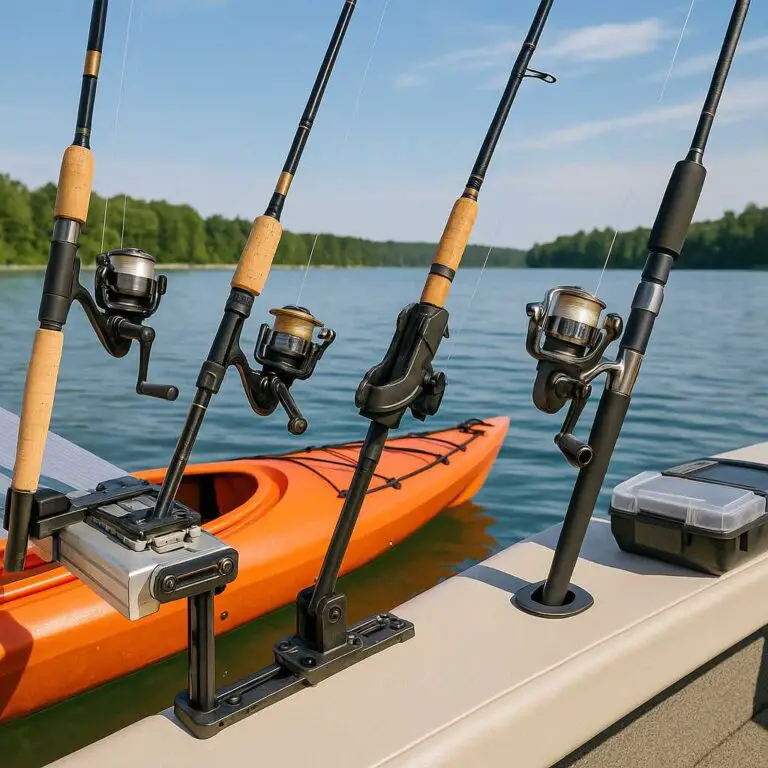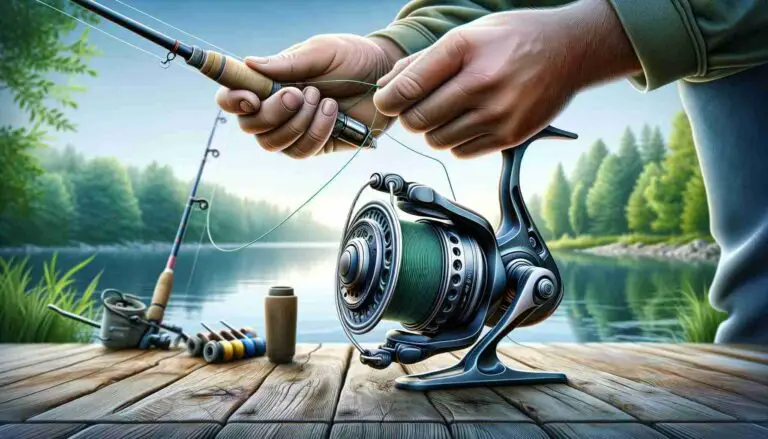If you’re anything like me, you know that catfishing is more than just a hobby – it’s a thrilling adventure that keeps us coming back for more. Today, I’m going to uncover one of the most sought-after secrets in the catfishing community: what exactly attracts catfish the most? Understanding what makes these whiskered wonders tick will not only increase your chances of reeling in a trophy catch but also deepen your appreciation for these elusive creatures.
So, get ready to embark on a journey where I explore the enticing factors that draw catfish in like magnets. From scents that drive them wild to delectable treats that make their taste buds dance, I’ll cover it all. But before I dive into the specifics, let’s take a moment to understand our slimy, scaly friends a little better.
Understanding the Catfish
When it comes to understanding catfish, there’s more than meets the eye. These remarkable creatures come in various species and inhabit different habitats, making them a diverse and intriguing subject of study. Let’s take a closer look at what makes catfish so unique.
First off, catfish can be found in both freshwater and saltwater environments, with different species adapting to specific conditions. From the massive Blue Catfish to the feisty Channel Catfish, each type possesses its own characteristics and behaviors.
One key characteristic that sets catfish apart is their sensitive barbels or “whiskers.” These barbels, located near their mouths, are equipped with taste buds and are highly sensitive to touch and chemical cues. Catfish use them to navigate their surroundings, locate food, and even communicate with one another.
Speaking of food, catfish are notorious opportunistic feeders. They have a diverse diet, devouring everything from smaller fish and crustaceans to insects, worms, and even plant matter. This wide-ranging palate makes them highly adaptable and always on the lookout for a tasty meal.
Understanding these traits and behaviors is crucial when it comes to attracting catfish. By tapping into their natural instincts and preferences, you can increase your chances of enticing them to bite. Now, let’s move on to the juicy stuff – the secrets of attracting catfish through scent, taste, and more.
The Power of Scent
The power of scent – a catfish’s olfactory delight! When it comes to attracting catfish, harnessing the right scents can make all the difference. Let’s explore how you can use scent to your advantage in your catfishing adventures.
Catfish have an exceptional sense of smell. In fact, their olfactory receptors are highly developed, allowing them to detect even the faintest scent in the water. This means that using scented baits can be a game-changer when it comes to luring in these whiskered creatures.
One option is to use natural scents that mimic the catfish’s natural prey. For example, incorporating fresh-cut baitfish, such as shad or skipjack, can be highly effective. The oils and aromas released by these baits can send catfish into a feeding frenzy.
If you prefer convenience, there’s also a wide range of artificial scents and attractants available on the market. These products are designed to mimic the smell of baitfish, worms, or other enticing treats. They come in various forms, including sprays, dips, and gels, allowing you to add an irresistible scent to your bait.
For those who love getting creative, you can even make your own DIY scent recipes. Some anglers swear by concoctions involving garlic, anise oil, or even strawberry Jello! Experimentation is key here, as different scents may work better in certain conditions or with specific catfish species.
Remember, when using scents, it’s important to apply them correctly. Ensure that your bait is thoroughly coated or soaked in the scent for maximum effectiveness. Additionally, consider using scent-dispensing devices, such as bait cages or scent-soaked sponges, to further enhance your bait’s aroma.
So, whether you opt for natural scents, artificial attractants, or your own secret recipes, harnessing the power of scent can significantly increase your success rate in attracting catfish. Now that I’ve covered scents, let’s dive into the world of taste and explore the treats that make catfish’s taste buds tingle!
Appealing to Their Taste Buds
Catfish, being opportunistic feeders, have diverse taste preferences. Let’s uncover some tips and tricks to appeal to their taste buds and entice them to strike.
Identify Catfish’s Favorite Food Sources: Catfish have a wide-ranging diet, but certain food sources tend to be particularly enticing to them. These include smaller fish like minnows, shad, and sunfish, as well as various types of aquatic insects and crustaceans. By knowing their favorite treats, you can select bait that closely mimics their natural prey.
Live Bait vs. Prepared Bait: When it comes to bait choices, you have two primary options: live bait or prepared bait. Live bait, such as worms, minnows, or crawfish, can be highly effective as it mimics the movements and scent of real prey. Prepared baits, on the other hand, come in various forms like dough, pellets, or dip baits, and are designed to emit attractive aromas. Experiment with both to see which works best for you.
Creating Homemade Catfish Bait Recipes: For those who enjoy a DIY approach, crafting homemade catfish bait can be a rewarding experience. Some popular homemade recipes include punch bait, stink bait, or dough bait. These concoctions often involve a mix of ingredients like cheese, blood, chicken livers, garlic, and secret spices. It’s a fun way to personalize your bait and experiment with flavors that catfish find irresistible.
Proper Bait Presentation: Presentation matters when it comes to enticing catfish. Consider the size of your bait, ensuring it matches the natural prey available in the water. Use hooks that are suitable for the bait size, and be mindful of the weight you use to keep your bait at the desired depth. Experiment with different rigging techniques, such as Carolina rigs or slip bobbers, to find what works best in your fishing spot.
Remember, catfish are not picky eaters, but they can be selective based on their mood and preferences. Patience and persistence are key. If one type of bait doesn’t yield results, don’t be afraid to switch it up and try something different.
Now that you’re armed with knowledge about scent and taste, you’re well on your way to becoming a master of catfish attraction. But wait, there’s more to explore! Let’s dive into the art of location and discover where catfish like to hang out.
Mastering the Art of Location
The art of location – a crucial aspect of catfishing success. Understanding where catfish hang out and their preferred habitats can greatly improve your chances of landing that trophy catch. Let’s dive into the world of catfish locations and unravel the secrets of finding their hotspots.
Understanding Catfish Behavior and Preferred Habitats: Catfish are known for their adaptability and can be found in various habitats, including rivers, lakes, reservoirs, and even ponds. To locate catfish hotspots, it’s essential to understand their behavior and preferred habitats. They are bottom-dwellers, often seeking out areas with ample covers, such as submerged logs, rock piles, deep holes, or areas with vegetation. Look for structures and features that provide shelter and food sources for catfish.
River vs. Lake Catfishing: While catfish can be found in both rivers and lakes, it’s important to note that their behavior can differ between the two. In rivers, catfish are often found near deep holes, eddies, or areas with current breaks. They follow the river flow, searching for food carried by the current. In lakes, catfish tend to roam more and cover larger areas, moving between feeding zones and resting spots. Pay attention to depth changes, underwater structures, and areas where the food chain is active.
Tips for Locating Catfish Hotspots
Now that you have a general idea of catfish habitats, here are some tips to pinpoint their hotspots:
- Use a fish finder or depth finder to locate underwater structures and drop-offs.
- Look for areas with a combination of cover, such as fallen trees, submerged vegetation, or rocky outcrops.
- Pay attention to areas where the current is slower, creating eddies or backwaters that catfish frequent.
- Investigate areas where there is an abundance of natural food sources, such as schools of baitfish or insect activity.
- Talk to local anglers, bait shops, or fishing forums to gather insights on productive catfish spots in your area.
Seasonal Patterns and Catfish Behavior: Catfish behavior can also be influenced by seasonal patterns. In warmer months, they may move to shallower areas in search of food and breeding grounds. During colder months, they tend to retreat to deeper, more stable areas. Understanding these seasonal patterns can help you adjust your fishing strategies accordingly.
Remember, locating catfish hotspots requires patience and exploration. It’s a constant learning process, and what works in one fishing spot may not necessarily work in another.
Now that you’ve unlocked the secrets of catfish location, it’s time to discover the techniques that leverage vibration, sound, and curiosity to attract these whiskered wonders.
Secrets of Catfish Attraction
The secrets of catfish attraction – it’s time to unravel the techniques that will have these whiskered wonders flocking to your bait. From harnessing the power of vibration and sound to leveraging their natural curiosity, we’re about to dive into some thrilling insights. Let’s get started!
- The Role of Vibration and Sound: Catfish have an acute sense of hearing, and vibrations can be a powerful tool to grab their attention. Rattling rigs, clackers, and spinners are all techniques that create vibrations in the water, mimicking the movement and sound of struggling prey. By incorporating these techniques into your fishing arsenal, you can entice catfish from a distance and pique their curiosity.
- Effective Techniques: Rattling rigs are designed to emit vibrations by using rattles or beads attached to your fishing line above the hook. As you reel in your bait, the rattling motion sends out signals that can attract nearby catfish. Clackers are noise-making devices that can be attached to your fishing line or used as a separate rig. They create a clicking or popping sound underwater, mimicking the noise of feeding activity. Spinners, on the other hand, combine vibration and flash to attract catfish. The rotating blade creates both visual and auditory stimulation, making it an enticing target for hungry catfish.
- Enhancing Your Chances with Underwater Speakers: Yes, you read that right – underwater speakers! Some innovative anglers have discovered that playing certain sounds underwater can attract catfish. By attaching a waterproof speaker to your fishing setup and playing sounds like baitfish feeding, catfish vocalizations, or even recorded fish frenzy, you can create an irresistible auditory allure. While this technique is relatively new, it has shown promising results and adds an exciting twist to the art of catfish attraction.
- Exploring Catfish Curiosity: Catfish are naturally curious creatures, and this trait can be used to your advantage. By introducing new objects or stimuli into their environment, you can pique their interest and trigger a feeding response. Experiment with adding scented attractants or bait enhancers to your presentation. Try different colors or glow-in-the-dark elements to make your bait stand out. By tapping into their inquisitive nature, you’ll increase your chances of a successful hook-up.
Remember, catfish attraction techniques may vary based on factors such as water conditions, catfish species, and personal preferences. It’s essential to experiment and adapt your strategies to find what works best for you in your fishing spot.
Now that you’re armed with the secrets of vibration, sound, and curiosity, you’re well on your way to becoming a catfish magnet. But wait, there’s more to uncover! Let’s shed some light on the nighttime quest of catfishing and explore the advantages and strategies of fishing after dark.
Tackling the Nighttime Quest
When the moon casts its gentle glow on the water, catfish come out to play. Nighttime catfishing offers its own set of advantages and strategies. So, grab your gear, and let’s dive into the exciting world of fishing under the stars!
- Nighttime Catfishing Advantages: Fishing for catfish at night provides several advantages. First, catfish tend to be more active and feed more aggressively during the darker hours. The cover of darkness gives them a sense of security, allowing them to venture out and search for food with confidence. Additionally, the competition from other anglers is typically reduced at night, giving you a better chance of landing that trophy catch.
- Moon Phases and Catfish Activity: Moon phases can influence catfish behavior, so it’s worth considering when planning your nighttime fishing trips. During the full moon, catfish may be more active and venture into shallower areas to feed. On the other hand, during the new moon, they might prefer deeper and more secluded spots. Understanding these lunar patterns can help you pinpoint the best fishing locations and adjust your strategies accordingly.
- Essential Gear and Equipment: Nighttime catfishing requires specific gear and equipment to ensure a successful and safe experience. Here are some essentials:
- Headlamps or LED lights: These are essential for visibility and navigating in the dark. Choose a headlamp with a red or green light option, as it won’t spook the fish.
- Glow-in-the-dark tackle: Utilize glow-in-the-dark hooks, bobbers, or beads to make your bait more visible to catfish in low-light conditions.
- Bells or rod tip lights: These help you detect bites in the darkness. Bells can be attached to your rod tips, while rod tip lights provide visual cues when a fish is on the line.
- Landing net and gripper gloves: Catfish can put up a strong fight, so having a sturdy landing net and gripper gloves will help you safely handle and release your catch.
- Safety Precautions and Best Practices: Night fishing brings its own set of challenges, so it’s essential to prioritize safety. Here are some best practices:
- Always let someone know your fishing plans and expected return time.
- Fish with a buddy whenever possible, as it enhances safety and adds to the overall experience.
- Wear appropriate clothing and footwear for the conditions, and consider insect repellent to fend off unwanted visitors.
- Be cautious of your surroundings, including slippery or uneven terrain, obstacles, and potential wildlife encounters.
Nighttime catfishing adds an extra level of excitement and mystery to your angling adventures. With the right gear, knowledge of moon phases, and safety precautions in place, you’re ready to embark on unforgettable nighttime quests for catfish.
As this journey comes to a close, let’s reflect on the importance of patience and persistence in catfishing. These qualities are vital for success and will make your experiences even more rewarding.
Patience and Persistence
Patience and persistence – the golden virtues of catfishing. These qualities are not only essential for success but also enhance the overall experience and joy of the sport. So, let’s take a moment to appreciate the significance of patience and persistence in our catfishing endeavors.
- The Importance of Patience: Catfishing is not a game for the impatient. It requires a calm and composed mindset, as catfish are known for their cautious nature. They may take their time to inspect your bait, evaluate the situation, and decide whether to strike. Patience allows you to remain focused and attentive, even during slow periods. Remember, a moment of inattentiveness could mean missing out on a potential trophy catch.
- Techniques for Maintaining Patience: Maintaining patience can be challenging, but there are techniques to help you stay focused and in the right mindset:
- Embrace the serenity of nature: Immerse yourself in the beauty of your surroundings. Enjoy the tranquility of the water, the gentle breeze, and the sights and sounds of wildlife. Use this time to connect with nature and find inner calmness.
- Engage in other activities: Bring along a book, listen to music, or simply spend time reflecting on life. By diverting your attention to other enjoyable activities, you can keep yourself occupied while waiting for that exciting bite.
- Set realistic expectations: Understand that catfishing is not always about landing a massive fish. Embrace the process and appreciate the small wins, such as the thrill of a gentle nibble or the satisfaction of successfully baiting a catfish.
- Staying Persistent: Persistence is the key to overcoming challenges and achieving your fishing goals. Catfishing can be unpredictable, with periods of inactivity followed by sudden bursts of action. Staying persistent means staying committed to your fishing spot, your techniques, and your belief in landing that prized catch.
- Adapting to Changing Conditions: Persistence doesn’t mean sticking to the same old routine. It also involves adapting to changing conditions. If your current bait or technique is not producing results, be open to trying new approaches. Experiment with different baits, depths, or locations until you find what works best for the day. Flexibility and adaptability are crucial in the ever-changing world of catfishing.
Patience and persistence will not only lead to more successful fishing trips but also create cherished memories and a deep appreciation for the art of catfishing.
Can You Use Chicken Gizzards for Catfish Bait? Bait Like a Pro!
Conclusion
In conclusion, understanding what attracts catfish the most is key to a successful fishing adventure. Live bait, like minnows and worms, along with enticing scents such as chicken liver or cheese, act as irresistible lures. Additionally, utilizing the vibrations and noise produced by rattling rigs or spinners can tap into their predatory instincts.
As you embark on your future catfishing adventures, remember to immerse yourself in the serenity of nature, adapt to changing conditions, and stay persistent in your pursuit. Cherish the moments spent by the water, whether it’s under the warm sun or the enchanting moonlight.
I hope the knowledge and tips I shared in this article serve as a valuable resource for your catfishing endeavors. Remember to respect the environment, follow local fishing regulations, and practice ethical angling by releasing fish responsibly.
So, arm yourself with these powerful tactics, cast your line, and get ready for thrilling encounters with these whiskered wonders.
Now, it’s time for you to grab your gear, head out to the water, and create your own catfishing tales. Share your stories, experiences, and discoveries with fellow anglers, because our collective knowledge and passion make the fishing community thrive.
Next Read:
Discovering The Ultimate Bait To Attract The Most Fish
The Best Fishing Bait For Catfish: Become A Pro Angler








